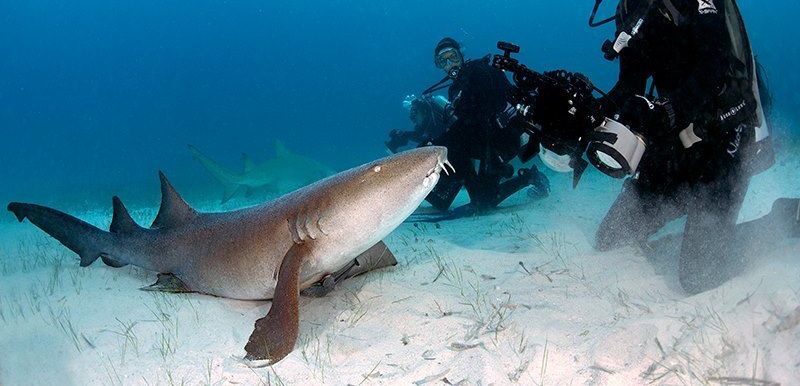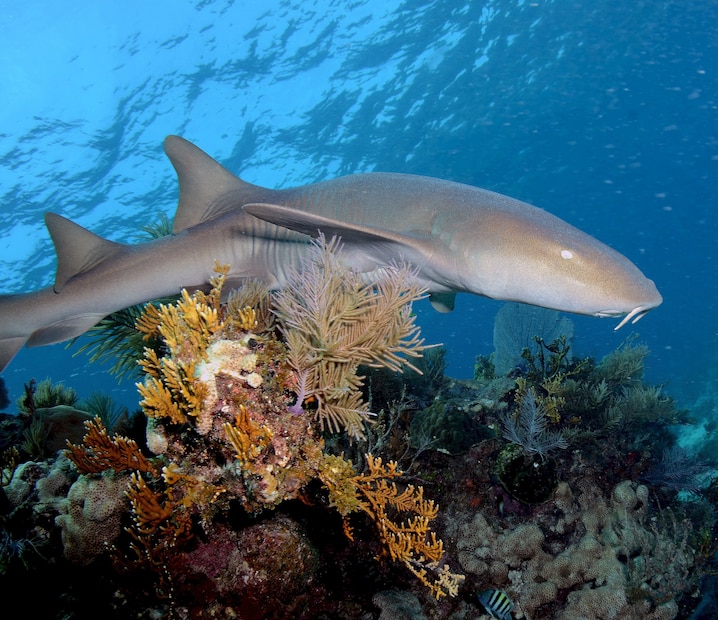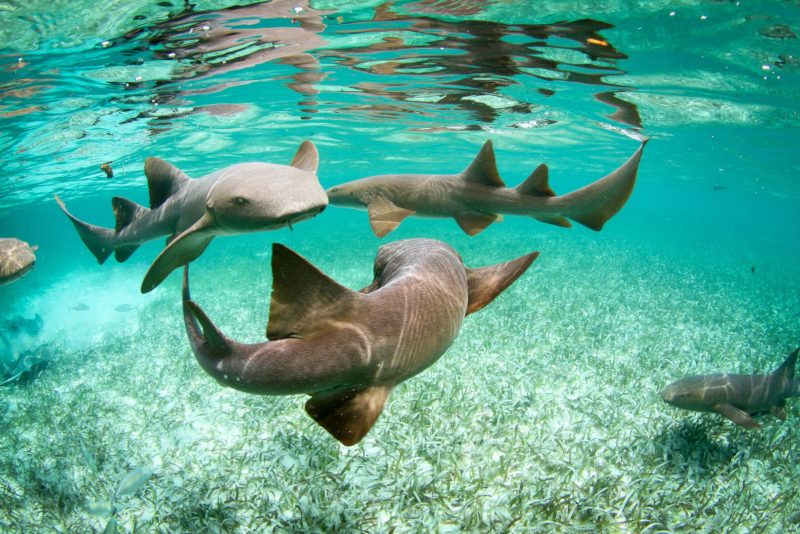Atlantic Nurse Shark (Ginglymostoma cirratum)
Warning! This shark is vulnerable!In 2019, the IUCN has classified the Atlantic Lemon shark as vulnerable. While the population may be slightly (1.2%) increasing in the Northwest and Western Central Atlantic, it's population has decreased by >80% in the Southwest Atlantic. Overall it has undergone a population reduction of 30–49% over the last 90 years. [source]

The nurse shark is a pretty calm and friendly species of shark. They are timid bottom dwellers and have jaws filled with lots of tiny sharp teeth. They can also pump water over their gills eliminating the need to move to be able to breate. Attacks by this species are usually caused by careless divers not respecting the animal.


The nurse shark's diet consists primarily of small fish 🐟, crustaceans 🦀 and occasionally even algae. They are nocturnal, searching for food on the sea floor during night. They have the ability to create suction and suck algae off of corals or sift through the sediments on the sea floor.
These little guys usually stay inshore. The pups stick to coral reefs or seagrass flats whereas the older sharks tend to stay at deeper reefs leaving their shelter to feed in shallower areas during night. Interestingly they also have something typical of reef sharks: site fidelity, a tendency to stick to a particular area. And it is also one of the few sharks that exhibits mating site fidelity, returning to the same area to breed.
